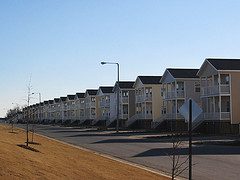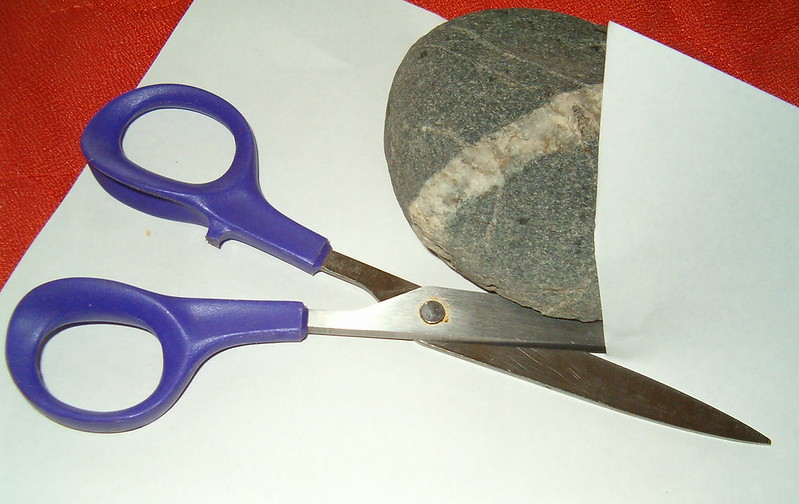
I read a recent column that suggested getting rid of the word “suburb.” While there’s still a distinction between the central city and the outskirts, the author noted that many of the outskirts have acquired an urban character, and can no longer be dismissed as the white-bread, boring suburbs. The stereotypical suburb, with its connotations of white flight and a rigid separation of residential areas from commerce, is transforming into something more interesting, more comparable to its downtown neighbor, and the old term no longer fits.
What about suburban-type places that exist in isolation from cities? I’m thinking of suburban subdivisions that have popped up over the years in seemingly random locations, well outside the metropolitan orbit. One such place near where I live, 50 or so miles from Richmond, Virginia, is a subdivision built in the 1960s. This gated community has a homeowner’s association, small lots, meandering streets that get you nowhere in a hurry, and utter isolation from any stores, cafes, or civic institutions. (Except to the extent that the homeowner association is a civic institution.) Over time the neighborhood has probably changed somewhat in its demographics, as some of the homes have filtered to people with lower incomes and more renters. What has not changed is what the neighborhood was designed for, to give people a chance to settle outside crowded urban cores, away from incompatible business and industry. And, perhaps, away from other undesirable elements, though as with any neighborhood, what is undesirable is in the eye of the beholder.
If the suburbs around big cities no longer function in their traditional role as “suburbs,” what can we say about a suburb plunked down in the middle of the countryside? A few years ago people came up with the term “exurbia” for this sort of place, but still there was this essential relationship, or severing of ties with, the city. What if the essential relationship is actually with the countryside, and the so-called suburb is actually urban, and has been all along? Can a place be urban if it has almost nothing “going on” other than houses?
For many of its residents, this subdivision amid the countryside has been urban from the start. People retired from their work as farmers or loggers, or they got too old to care for their large farms, and so they decided to move to “town.” Since the towns in these parts tend not to have more than a few thousand people, there weren’t many places to move to. This subdivision probably filled a real need for rural people so they could stay close to home, rather than providing an escape for people fleeing somewhere else.
At the same time, many of the people who moved to this subdivision probably didn’t want to actually move to a town center. They liked the idea that their homes should be separated physically from the noise and grime of town. For them, the subdivision still serves the same purposes it did 50 years ago.
But the subdivision hasn’t aged so well, I don’t think. Many of the houses are in rough shape, and as I mentioned, there are no businesses or services nearby. Perhaps it’s time to give the rural “suburb” a face-lift, to “urbanize” it a bit. It should be possible to bring some commerce to the neighborhood, and therefore some new vibrance, without endangering the values that it was built on.
Photo by Janek B via Creative Commons.





Comments